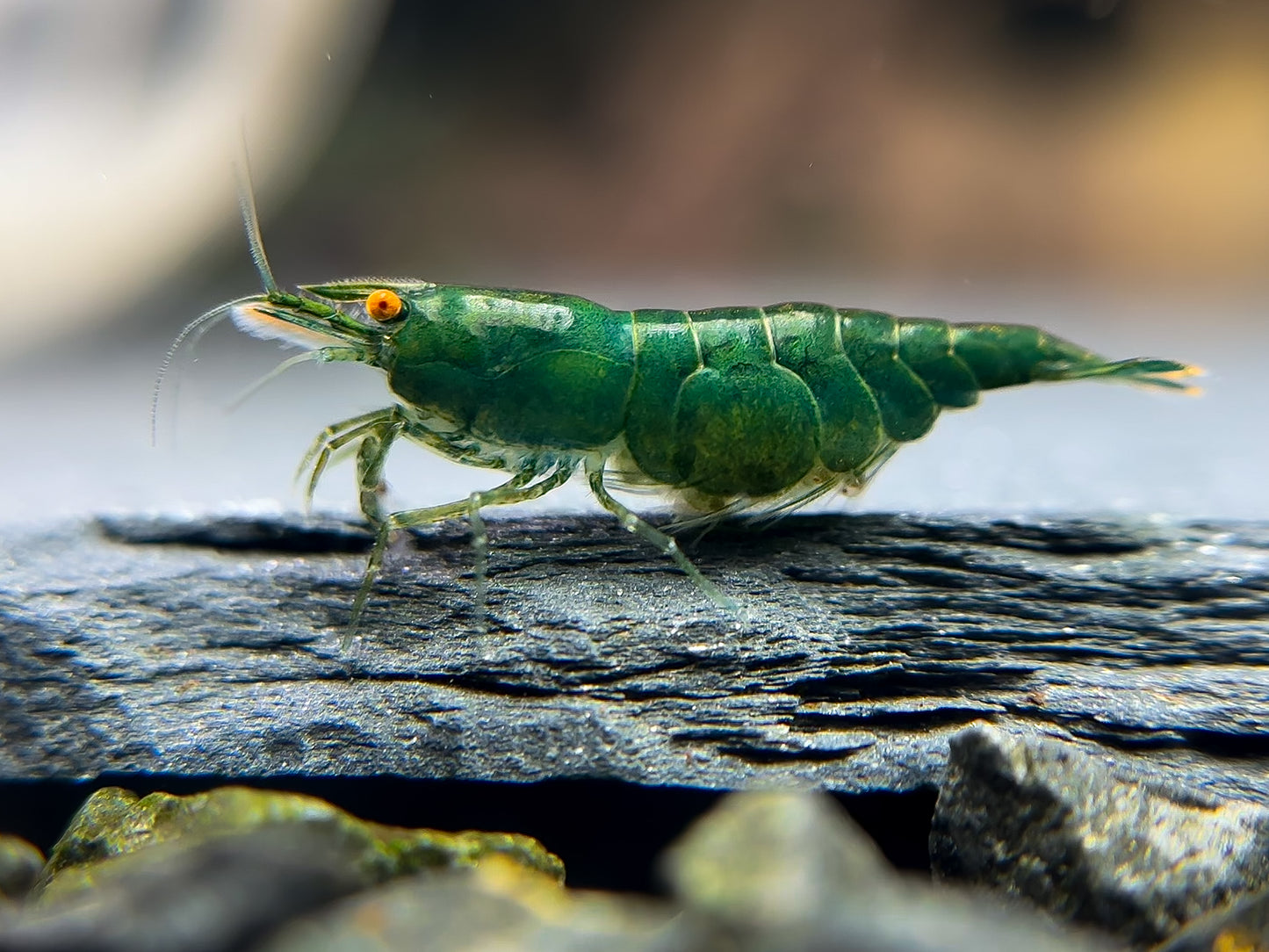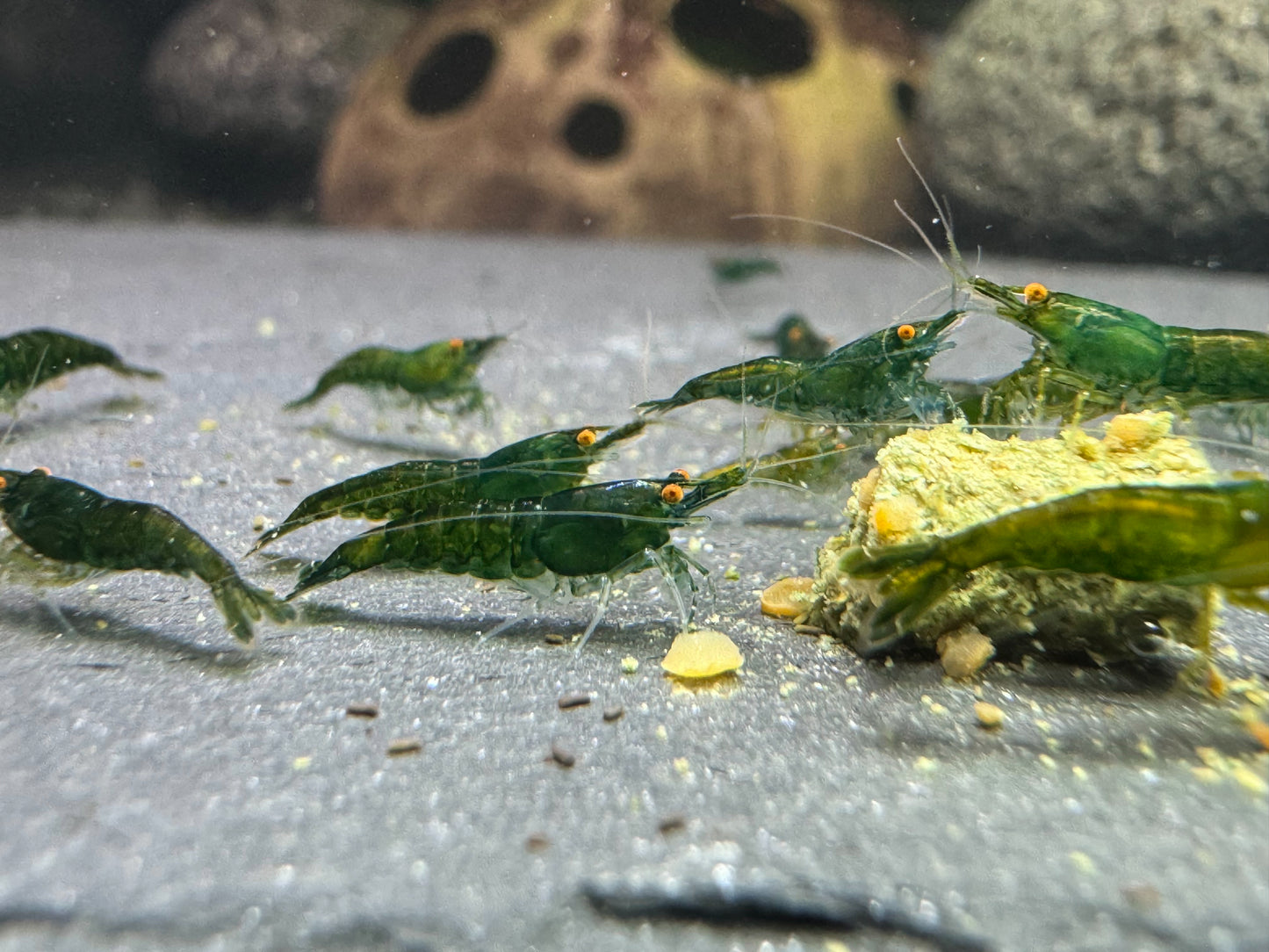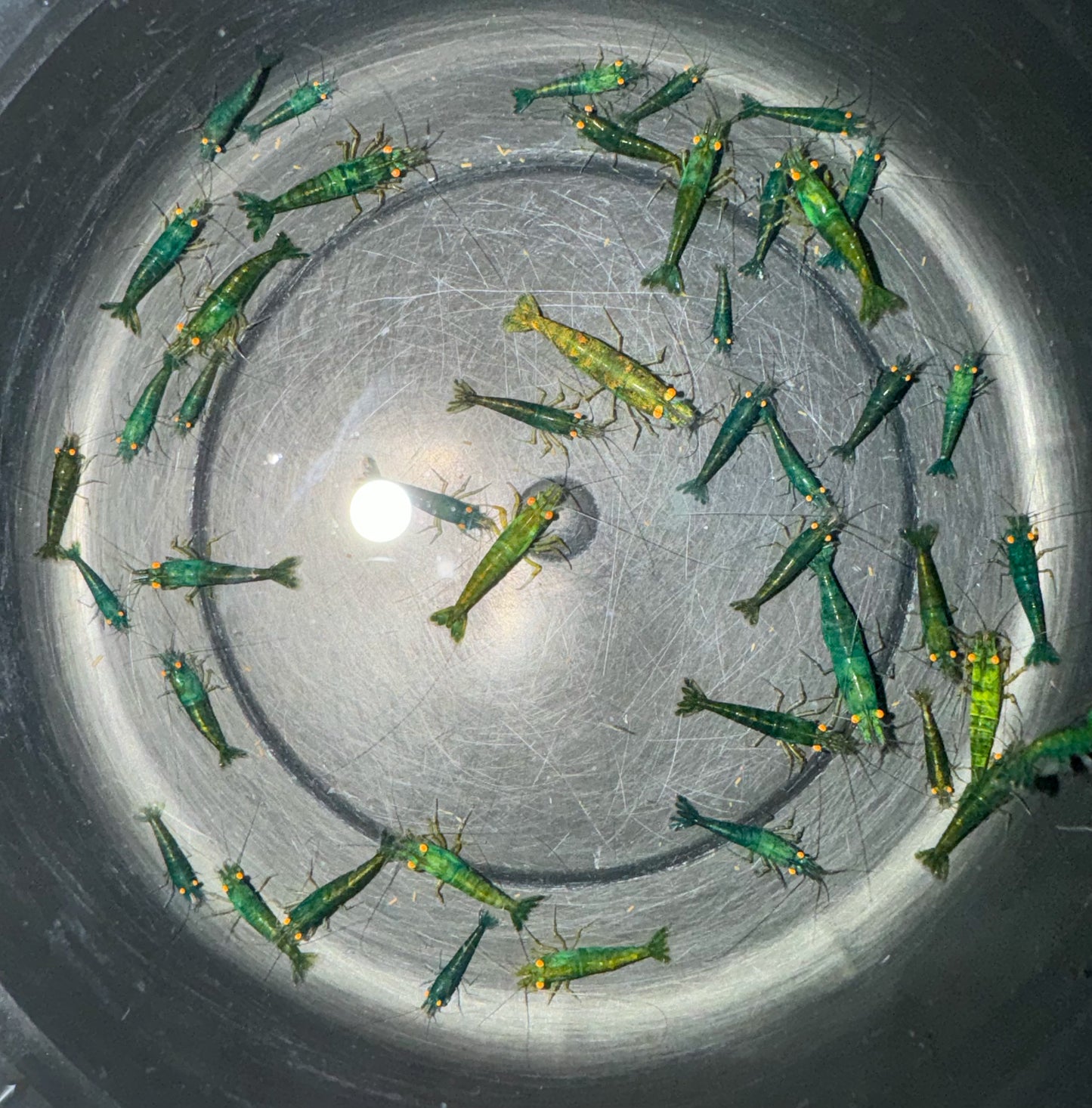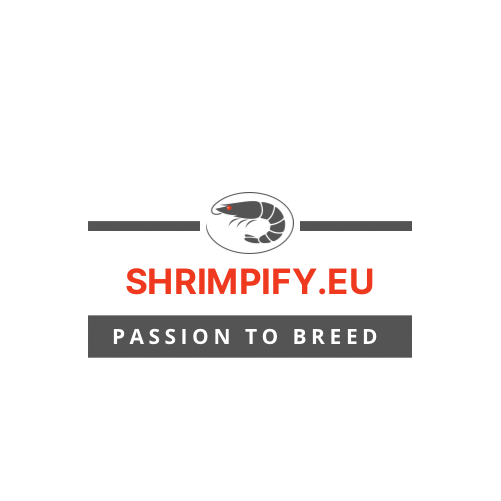Neocaridina "Green Jade OE" (Green Demon)
Neocaridina "Green Jade OE" (Green Demon)
Quantity discount
Quantity discount
The discounts are calculated automatically.
Couldn't load pickup availability
Green Jade orange eyes “Green Demon” are fully and richly colored in green. Since the Dark Green Jade strain was crossed in, this results in a deep dark green, which has now been selectively bred for several generations. The orange eyes create a brilliant contrast to the green body.
Our Green Demon are the first green Neocaridina with orange eyes and have received multiple awards for this: At both previous TGISC participations in Category 1 (2023 and 2025), this line was able to win first place each time. In Caridina Issue 01/2024 we reported on this strain for the first time.
How stable is this line? The Green Demon is currently our newest strain. Just like Green Jade strains with black eyes, this line can still vary in different shades of green – ranging from intense dark green to striking bright green. When the animals are bred among themselves, 100% of the offspring inherit the orange eyes, about 60–70% of the animals are solid green. Some individuals may appear with a lighter, non-solid green coloration or may develop a yellow dorsal stripe.
Neocaridina with orange eyes? Since 2021 we have been offering offspring of our Neocaridina breeding lines with orange eyes (OE). The inheritance of the orange eyes is stable. Visually, the orange eyes of Neocaridina can be distinguished from those of Tiger shrimp, as they have a dark spot in the center, possibly indicating residual pigmentation. We published a detailed report on these animals in the Caridina magazine (Issue 2/2022). You can find more on this topic here.
Delivery size: We make sure to provide a balanced ratio of females, males, and juveniles (each 1/3 share).
General care and breeding: Like all dwarf shrimp of the genus Neocaridina, these animals are very adaptable and can usually be kept without problems in tap water (18–26 °C). In our facility the tap water values are: pH 7.6, gH 10, kH 9, conductivity 600 µS, 22 °C. The animals feed on regular fish food, algae growth, as well as dead animal and plant matter. Thus, they are excellent recyclers and contribute to the biological balance in the aquarium. Cohabitation with small and medium-sized aquarium fish can work, but it is recommended to provide sufficient hiding places such as moss and roots. Under optimal conditions, the animals quickly grow into lively colonies.
Share



Video
Introduce other complementary products.
DESCRIBE HOW TO PAIR PRODUCTS TOGETHER
Subscribe to our emails
Be the first to know about new collections and exclusive offers.



